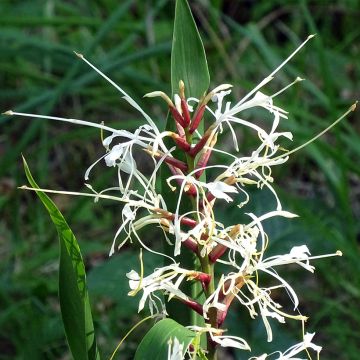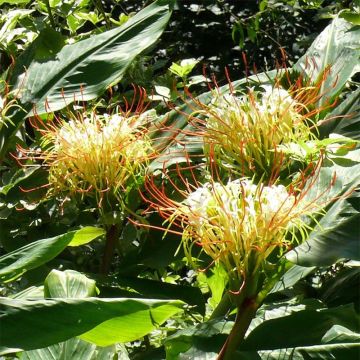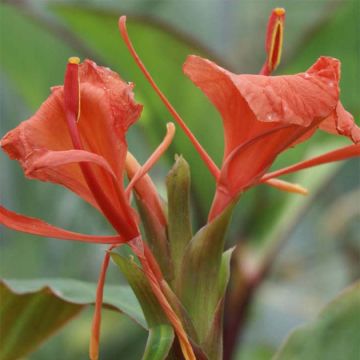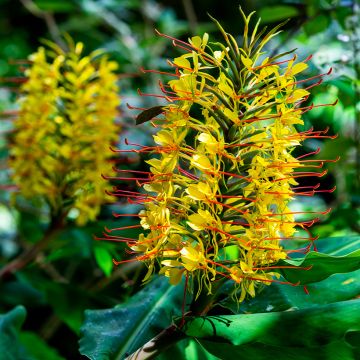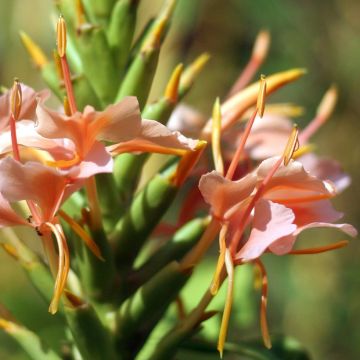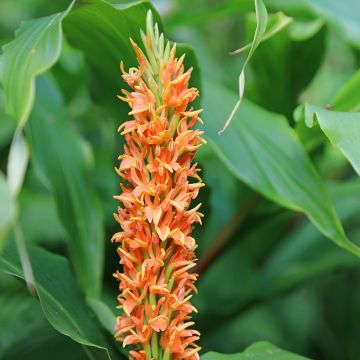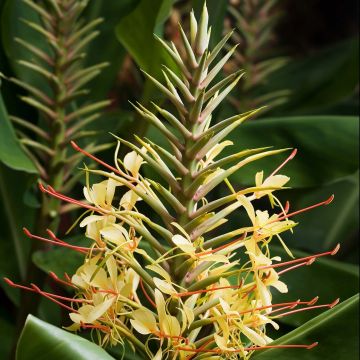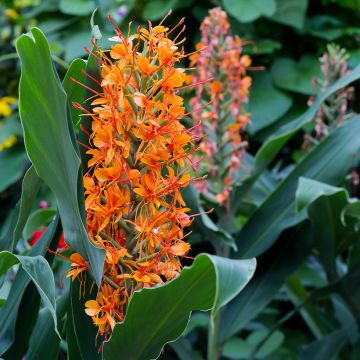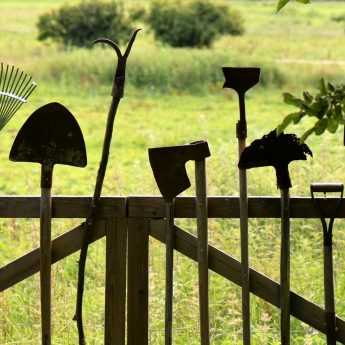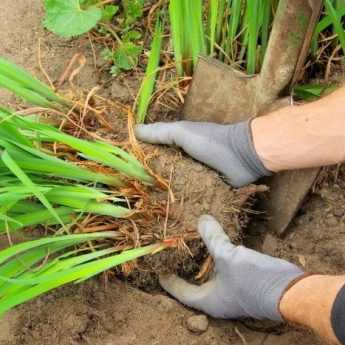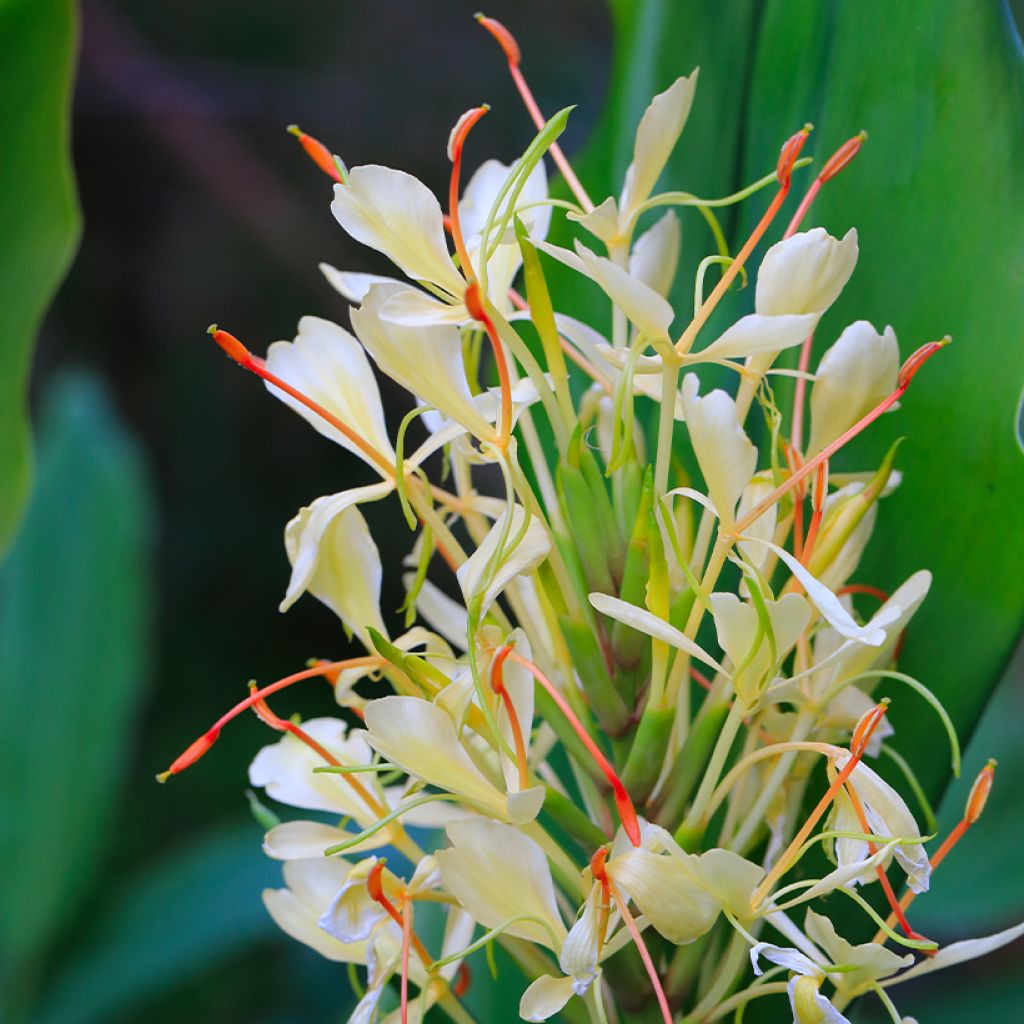

Hedychium Dixter (Tresco) - Longose - Gingembre d'ornement
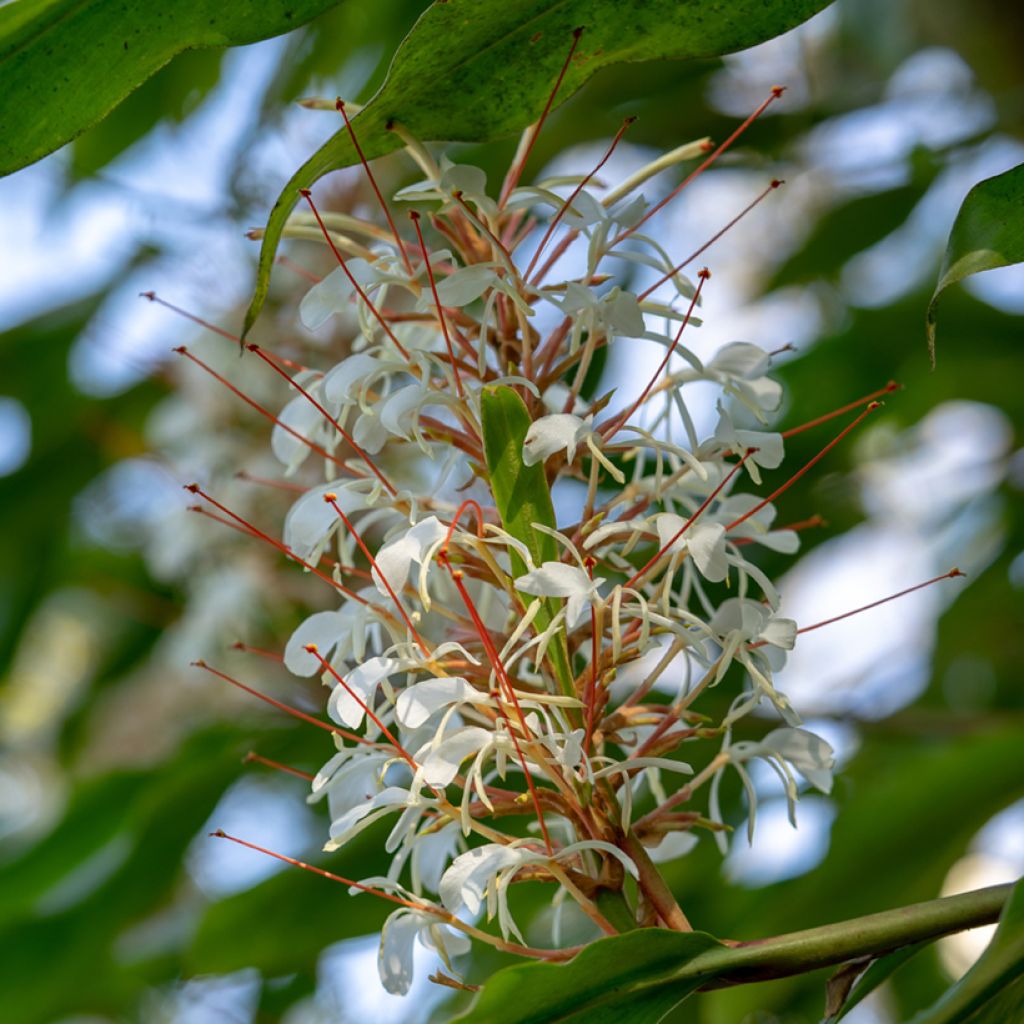

Hedychium Dixter (Tresco) - Longose - Gingembre d'ornement
Hedychium Devon Cream
Hedychium coronarium x gardnerianum Dixter
Ginger Lily
This item cannot be shipped to the selected country
Delivery charge from €6.90
More information
Delivery charge from €6.90
More information
Schedule delivery date,
and select date in basket
This plant carries a 12 months recovery warranty
More information
We guarantee the quality of our plants for a full growing cycle, and will replace at our expense any plant that fails to recover under normal climatic and planting conditions.
From €7.90 for pickup delivery and €6.90 for home delivery
Express home delivery from €8.90.
Does this plant fit my garden?
Set up your Plantfit profile →
Description
Hedychium 'Devon Cream', also marketed under the names of Tresco ginger lily, is a variety of tall ginger lily interesting for its hardiness, lush vegetation, and beautiful late summer cream flowering. This large rhizomatous plant displays lush foliage, highly decorative, and an exotic-looking flowering consisting of spider-like flowers. A very beautiful plant for the terrace or a large exotic bed, in a not too harsh climate.
Hedychium 'Devon Cream' is said to have been discovered in Tresco, in the Scilly Isles, England. It is a hybrid between Hedychium coronarium and H. gardnerianum. All these plants belong to the Zingiberaceae family. 'Devon Cream' is a rather hardy plant, deciduous in winter, tolerating brief periods of freezing, down to -12/-15°C under a thick protective mulch. When mature, this rhizomatous plant will form an upright clump, 1.50m high and 80-90cm (32-35in) wide. It is composed of slender leafy canes with shiny, lanceolate, green to dark green, alternate leaves that are wide, full, and sheathing. Flowering takes place in August-September in mild climates, in autumn elsewhere. The inflorescence consists of numerous small cream-coloured flowers, somewhat resembling those of Gauras with their compound structure of small petals surrounding long protruding orange stamens. They attract many bees. The above-ground vegetation disappears in autumn, but regrows from the stump in spring.
Hedychium 'Devon Cream' is grown in large pots or in the ground, in a sheltered location away from strong winds and severe frosts. In the garden, you can create a tropical-inspired bed, for example by combining Hedychiums with a Chinese palm tree, a Japanese banana tree, against a backdrop of castor oil plants and giant Cannas. In mild climates, the ornamental ginger can accompany the flowering of Abutilons, Cassia, Lantana, Brugmansia, and other Daturas. In colder regions, it can be grown like a Canna.
Flowering
Foliage
Plant habit
Botanical data
Hedychium
coronarium x gardnerianum
Dixter
Zingiberaceae
Ginger Lily
West Asia
Other Hedychium
View all →Planting and care
Hedychiums are known to be tender plants due to their origin. However, Hedychium 'Devon Cream' is a rather hardy variety capable of withstanding negative temperature peaks of around -12 to -15°C (10.4 to 5°F), under a thick protective mulch. At the first frost, cut back the foliage to the ground and then mulch the stumps with a thick layer of dead leaves. Alternatively, the stump can be dug up and treated like Cannas. Choose a warm and sunny location (partial shade in our very hot regions), sheltered from strong winds. In partial shade, Hedychium tends to grow taller. The soil should remain moist throughout the growing season. A rich, deep, but well-drained soil is most suitable. Growing in large containers is also possible. In this case, the plant should be stored frost-free in a bright, unheated space during winter. Watering should be reduced in winter and abundant from spring to summer.
Planting period
Intended location
Care
Planting & care advice
This item has not been reviewed yet - be the first to leave a review about it.
Haven't found what you were looking for?
Hardiness is the lowest winter temperature a plant can endure without suffering serious damage or even dying. However, hardiness is affected by location (a sheltered area, such as a patio), protection (winter cover) and soil type (hardiness is improved by well-drained soil).

Photo Sharing Terms & Conditions
In order to encourage gardeners to interact and share their experiences, Promesse de fleurs offers various media enabling content to be uploaded onto its Site - in particular via the ‘Photo sharing’ module.
The User agrees to refrain from:
- Posting any content that is illegal, prejudicial, insulting, racist, inciteful to hatred, revisionist, contrary to public decency, that infringes on privacy or on the privacy rights of third parties, in particular the publicity rights of persons and goods, intellectual property rights, or the right to privacy.
- Submitting content on behalf of a third party;
- Impersonate the identity of a third party and/or publish any personal information about a third party;
In general, the User undertakes to refrain from any unethical behaviour.
All Content (in particular text, comments, files, images, photos, videos, creative works, etc.), which may be subject to property or intellectual property rights, image or other private rights, shall remain the property of the User, subject to the limited rights granted by the terms of the licence granted by Promesse de fleurs as stated below. Users are at liberty to publish or not to publish such Content on the Site, notably via the ‘Photo Sharing’ facility, and accept that this Content shall be made public and freely accessible, notably on the Internet.
Users further acknowledge, undertake to have ,and guarantee that they hold all necessary rights and permissions to publish such material on the Site, in particular with regard to the legislation in force pertaining to any privacy, property, intellectual property, image, or contractual rights, or rights of any other nature. By publishing such Content on the Site, Users acknowledge accepting full liability as publishers of the Content within the meaning of the law, and grant Promesse de fleurs, free of charge, an inclusive, worldwide licence for the said Content for the entire duration of its publication, including all reproduction, representation, up/downloading, displaying, performing, transmission, and storage rights.
Users also grant permission for their name to be linked to the Content and accept that this link may not always be made available.
By engaging in posting material, Users consent to their Content becoming automatically accessible on the Internet, in particular on other sites and/or blogs and/or web pages of the Promesse de fleurs site, including in particular social pages and the Promesse de fleurs catalogue.
Users may secure the removal of entrusted content free of charge by issuing a simple request via our contact form.

































